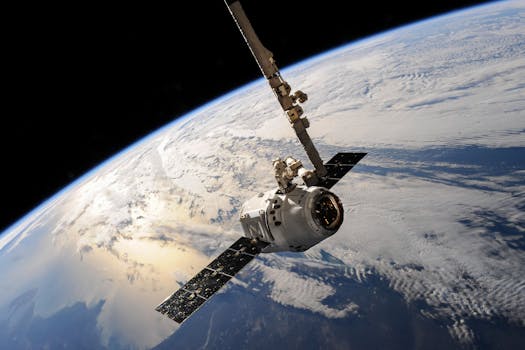GEO Satellites: Understanding the Technology and Applications of Geostationary Earth Orbit Satellites

GEO Satellites: Understanding the Technology and Applications of Geostationary Earth Orbit Satellites
GEO satellites, or geostationary earth orbit satellites, are a type of satellite that orbits the Earth at an altitude of approximately 36,000 kilometers. At this altitude, the satellite’s orbital period is equal to the Earth’s rotational period, allowing it to remain stationary in the sky relative to a fixed point on the Earth’s surface. This unique characteristic makes GEO satellites ideal for a wide range of applications, including telecommunications, earth observation, and navigation.
The concept of GEO satellites was first proposed by scientist Arthur C. Clarke in 1945, and the first GEO satellite, Syncom 2, was launched in 1963. Since then, hundreds of GEO satellites have been launched, providing a wide range of services including television broadcasting, telecommunications, and weather forecasting. GEO satellites are typically launched into orbit using powerful rockets, such as the Ariane 5 or the Atlas V, and are designed to operate for up to 15 years or more.
Applications of GEO Satellites
GEO satellites have a wide range of applications, including telecommunications, earth observation, and navigation. In the field of telecommunications, GEO satellites are used to provide television broadcasting, internet connectivity, and mobile phone services. They are also used for earth observation, providing images and data on weather patterns, ocean currents, and land use. Additionally, GEO satellites are used for navigation, providing location information and timing signals for GPS and other navigation systems.
One of the most significant applications of GEO satellites is in the field of telecommunications. GEO satellites are used to provide television broadcasting, internet connectivity, and mobile phone services to remote and underserved areas. They are also used to provide backup connectivity in case of natural disasters or other emergencies. For example, during the 2010 Haiti earthquake, GEO satellites were used to provide emergency communications and connectivity to the affected areas.
Technological Advancements in GEO Satellites
In recent years, there have been significant technological advancements in GEO satellites, including the development of more efficient propulsion systems, advanced materials, and more powerful solar panels. These advancements have enabled the development of smaller, more efficient, and more cost-effective GEO satellites. For example, the Boeing 702SP satellite is a small, all-electric propulsion satellite that is designed to provide high-power telecommunications services while minimizing fuel consumption and reducing launch costs.
Another significant technological advancement in GEO satellites is the development of advanced antenna systems. These systems enable GEO satellites to provide more targeted and efficient communications services, including spot beams and shaped beams. For example, the Intelsat 29e satellite features a advanced antenna system that provides high-throughput connectivity to the Americas and the Caribbean.
Challenges and Future Directions
Despite the many advantages of GEO satellites, there are also several challenges associated with their development and operation. One of the main challenges is the increasing congestion in the geostationary orbit, which is leading to a shortage of available orbital slots. This congestion is also leading to an increase in interference between satellites, which can affect the quality of service and the reliability of the satellites.
Another challenge facing the GEO satellite industry is the development of new technologies and services, such as 5G and the Internet of Things (IoT). These technologies will require more advanced and efficient satellites, as well as new business models and regulatory frameworks. To address these challenges, the industry is investing in the development of new technologies, such as advanced propulsion systems and more efficient antenna systems.
In conclusion, GEO satellites are a vital component of modern telecommunications and earth observation systems. Their unique characteristics, including their geostationary orbit and high altitude, make them ideal for a wide range of applications. As the demand for telecommunications and earth observation services continues to grow, the importance of GEO satellites will only continue to increase. To address the challenges facing the industry, including congestion and interference, the development of new technologies and services will be critical.



